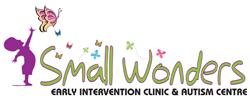Dance Movement Therapy
Dance is one of the highest forms of human expression. It has been an art form used all over
the world to express emotions, Concepts and ideas.
Dance Movement therapy is the psychotherapeutic usage of this art form to assist in the
development of behaviors emotions and general movement patterns which has been found to
be extremely effective for children with Autism.
Dance movement therapy uses movements to enhance motor skills, emotions and behaviors.
People with Autism Spectrum Disorders (ASD) are mostly not aware of their mind and body.
Dance movement therapy uses bodily sensations to stimulate and re-establish the mind body
connection which in turn help them to achieve a land of harmony.
It is the functional application of varied forms of dance by usage of group of muscles to bring
certain effect to modify the child's behavior or altering emotion.
IMPLICATION OF DANCE THERAPY
Autism.
Mental retardation.
Deaf and hearing impaired.
Eating disorders.
USES OF DANCE THERAPY
Promotes psychotherapeutic usage of body movements.
Clients will learn to express ideas, thoughts and feelings through their motor activity.
Enhances interaction and communication pattern.
Relieves tension, stress, anxiety and worries.
Improves self-confidence and contentment.
Serves as a sort of enjoyment and entertainment.
Exhibits talents and abilities.
Channelizes the emotional experiences in to expression of body movements.
BENEFITS OF DANCE THERAPY FOR PEOPLE WITH AUTISUM
Recently, dance movement therapy made its mark as a viable complimentary treatment option
for people with Autism. Dance movement therapy enhance emotions, behaviors and motor
skills. People with Autism Spectrum Disorder are mostly less or not aware of their body and
mind. Dance movement therapy uses bodily sensations to stimulate and re-establish the mind-
body connection, which in turn helps them to return to harmony. Many studies and research
have supported the positive effects of dance movement therapy on people with autism.
DANCE THERAPY CAN HELP PEOPLE AUTISUM IN VARIOUS WAYS, SUCH AS:
Improved attention and concentration.
It gives them the liberty to be expressive of their emotions, using movements.
It helps them enhance their social interactions and leads to the formation of
relationships, when placed in groups.
They can learn different patterns of movements required for daily activities.
A dance therapist can help to develop vocabulary skills, using the imitation of the
repetitive movements the person engages in.
Group sessions are best to develop Communication and social skills.
Choreographed sequences can help in enhancing memory and recapitulation skills.
Improved body image.
It helps in developing body awareness and promotes general well-being.
It helps to strengthen fine motor skills.
Different planes of motion during therapy helps to stimulate verbal communication
skills.
They learn to develop empathy.
It helps them to learn adaption to different situations.
It provides a platform for children with ASD to build upon their social skills, which helps
them to further understand the emotions and feelings of other people.
.jpg)

